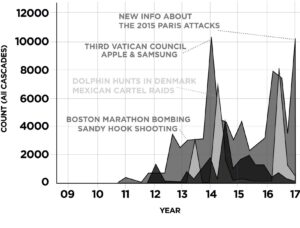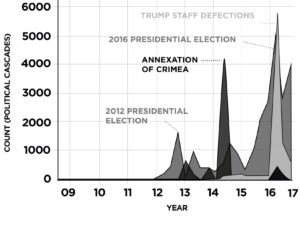The political motive for creating fake news is abundantly clear from Russia’s foreign interference in Ukrainian and American politics. But the economic motive should not be underestimated. And nowhere has the economic motive to create fake news been more obvious than in Veles, Macedonia. Veles is a sleepy mountain town with 55,000 residents, two TV channels, and a few lovely churches. It boasts a handful of notable historical figures and events, from Ottoman grand viziers to battles between the Serbian and Ottoman empires in the late fourteenth century. But perhaps the most important contribution to Veles’s global historical significance will be that during the 2016 U.S. presidential election, its unemployed teen population discovered how the Hype Machine could make them rich by spreading fake news online. The teenagers of Veles developed and promoted hundreds of websites that spread fake news to voters in the United States through social media advertising networks. Companies like Google show ads to Internet browsers and pay website creators based on how many high-quality eyeballs they attract. The teenagers of Veles discovered that they could make a lot of money by creating websites and promoting their content though social media networks. The more people read and shared their articles, the more money they made. They found that fake news attracted more readers and, as we found in our own research, that it was 70 percent more likely to be shared online. They created fake accounts to amplify the signal, and once the trending algorithms got hold of them, the fake news stories received a broadcasting boost, exposing them to even more people, in new areas of the network. What ensued was a deluge of fake news that washed over the American public just as they were heading to the polls. Money flowed in one direction and falsehood flowed in the other, leaving Veles flush with new BMWs, and the United States inundated with false news months before the 2016 presidential election. The town of Veles is only one such example. In 2019 fake news websites generated over $200 million a year in ad revenue. Fake news is big business, and our approaches to solving the problem (which I will address in Chapter 12) must recognize that economic reality.
If political incentives was the only motivation for fake news, then it might be easier to alleviate this issue. However, the real world is often far more complex, with multi-faceted parties and incentives. When fake news sites become profit generating on their own, then there are a whole new set of reasons for people to get into it. People whom otherwise have no political reasons might get into it for the profit.



 Figure 1.2 The fact-checked true (light gray), false (dark gray), and mixed (partially true, partially false) (black) political news cascades on Twitter from 2009 to 2017.
Figure 1.2 The fact-checked true (light gray), false (dark gray), and mixed (partially true, partially false) (black) political news cascades on Twitter from 2009 to 2017.






